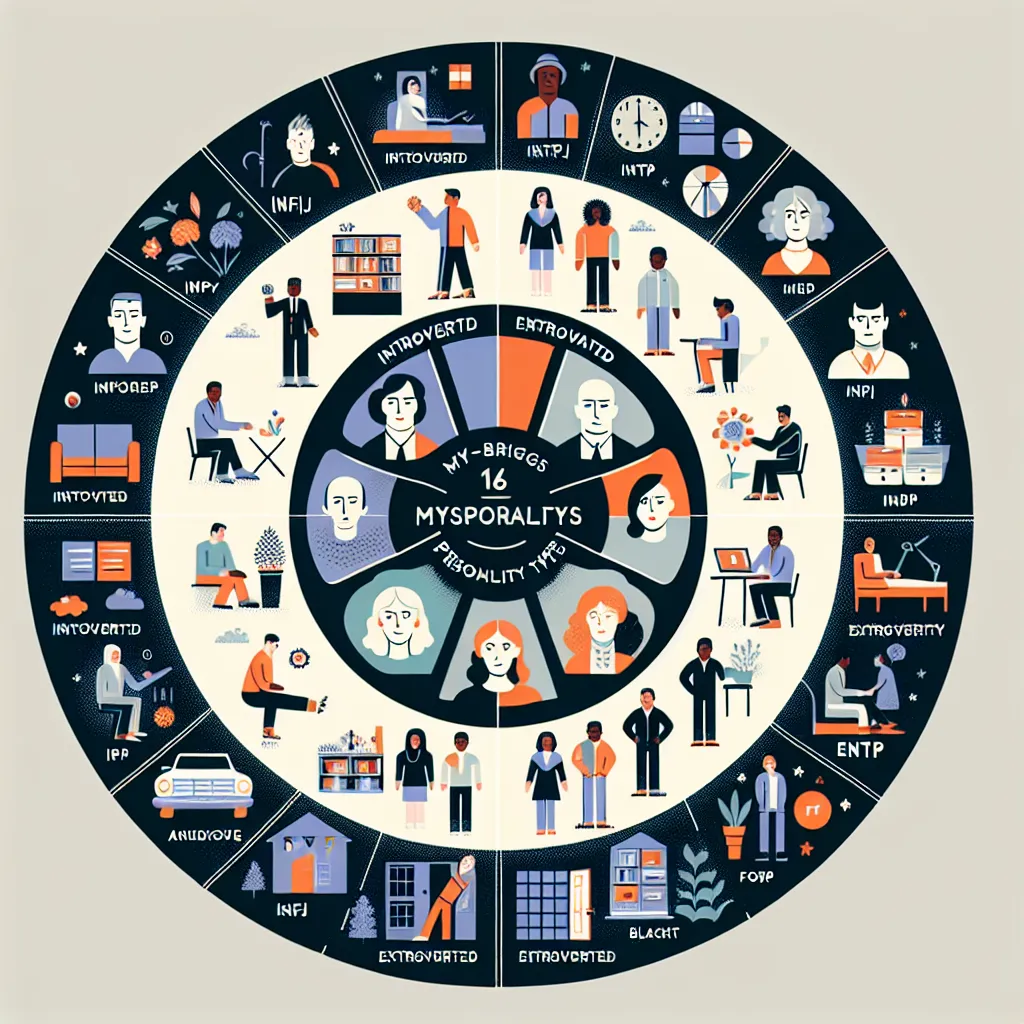The Myers-Briggs Type Indicator (MBTI) is an introspective self-report questionnaire indicating differing psychological preferences in how people perceive the world and make decisions. Developed by Katharine Cook Briggs and her daughter Isabel Briggs Myers, the MBTI is based on the typological theory proposed by Carl Gustav Jung, who had speculated that humanity experiences the world using four principal psychological functions – sensation, intuition, feeling, and thinking – and that one of these four functions is dominant for a person most of the time.
Unlocking the secrets of personality types can be a transformative tool for personal growth, communication, and career development. The Myers-Briggs Type Indicator is a popular and widely used personality assessment tool that divides people into 16 distinct personality types based on four dichotomies: Introversion (I) versus Extraversion (E), Sensing (S) versus Intuition (N), Thinking (T) versus Feeling (F), and Judging (J) versus Perceiving (P). By decoding these personality types, individuals can gain profound insights into their behaviors, motivations, strengths, and potential areas for development.
Introversion and Extraversion, the first dichotomy, determine where individuals draw their energy from. Introverts (I) feel more comfortable focusing on their internal thoughts and feelings, while extraverts (E) gain energy from active involvement in events and having a wide range of social interactions. Understanding this aspect of personality can vastly improve interpersonal relationships and communication.
The second dichotomy of Sensing (S) versus Intuition (N) defines how people perceive information. Sensors are more likely to trust information that is tangible and concrete, that is, information that can be understood by the five senses. They pay attention to facts, details, and reality. On the other hand, intuitives tend to trust information that is more abstract or theoretical, that can be associated with other information (either remembered or discovered by seeking a wider context or pattern). They may be more interested in future possibilities than in concrete realities.
Thinking (T) versus Feeling (F), the third pair of psychological preferences, is concerned with decision-making. Thinkers (T) choose to make decisions based on objective principles and logical analysis. They give more weight to logic than to social considerations. Feelers (F), meanwhile, tend to come to decisions by empathizing and harmonizing with the situation, using a set of ethics or humanity. They often consider the people involved and the emotional impact when making decisions.
Finally, Judging (J) versus Perceiving (P) describes how individuals approach the structure of their lives. Judging types like to have matters settled, prefer a planned or orderly way of life, feel more comfortable when decisions are made, and like to bring life under control as much as possible. Whereas perceiving types prefer to keep their options open, like to be able to act spontaneously, and like to feel unrestrained by rules.
When these dichotomies are combined, the result is the 16 unique Myers-Briggs Personality Types, each identified by a four-letter acronym like ISTJ or ENFP. For example, ISTJs are typically serious and dependable individuals who can be counted upon to follow through. Meanwhile, ENFPs are seen as warm, enthusiastic, and imaginative, seeing life as full of possibilities.
The application of Myers-Briggs personality types extends to various aspects of life, from career development and management styles to personal relationships and self-discovery. In the workplace, knowing your personality type, as well as that of your colleagues, can facilitate better teamwork and productivity. Leaders and HR professionals often use Myers-Briggs personality types to help place employees in roles that suit their natural preferences, which can lead to greater job satisfaction and performance.
In relationships, understanding the various preferences can improve communication, reduce conflict, and foster deeper connections. It helps individuals appreciate differences and better navigate the complexities of social interactions. By understanding that others might have an entirely different approach to processing information and making decisions, couples and friends can learn to bridge the communication gap that often arises from personality differences.
Moreover, the Myers-Briggs personality types can aid personal development. Knowing whether one is a Judger or a Perceiver, for instance, can help an individual manage time better and set realistic goals for themselves. Understanding if one is more of a Sensing or an Intuitive type could guide how they approach learning new information. This self-awareness is a powerful first step in self-improvement and personal growth.
However, as helpful as the Myers-Briggs personality types are for introspection and guiding personal growth, they are not without limitations. Critics argue that the MBTI lacks reliability and validity, and it should not be used to pigeonhole or make definitive predictions about individuals. While the MBTI suggests preferences, it does not account for skills, abilities, or the malleability of personality traits over time.
In conclusion, the Myers-Briggs Type Indicator offers a compelling framework for understanding human personality. By categorizing individuals into 16 personality types based on their preferences in perception and decision-making, the MBTI provides valuable insights into one’s character, guiding personal, professional, and social development. While it should not be used to limit potential or as an absolute measure of one’s personality, when applied prudently, it serves as a practical tool for self-awareness and interpersonal understanding, enabling individuals to navigate the complexities of human behavior more astutely. As the study of personality continues to evolve, the MBTI remains a seminal piece in the intricate puzzle of human psychology.



Leave a Comment